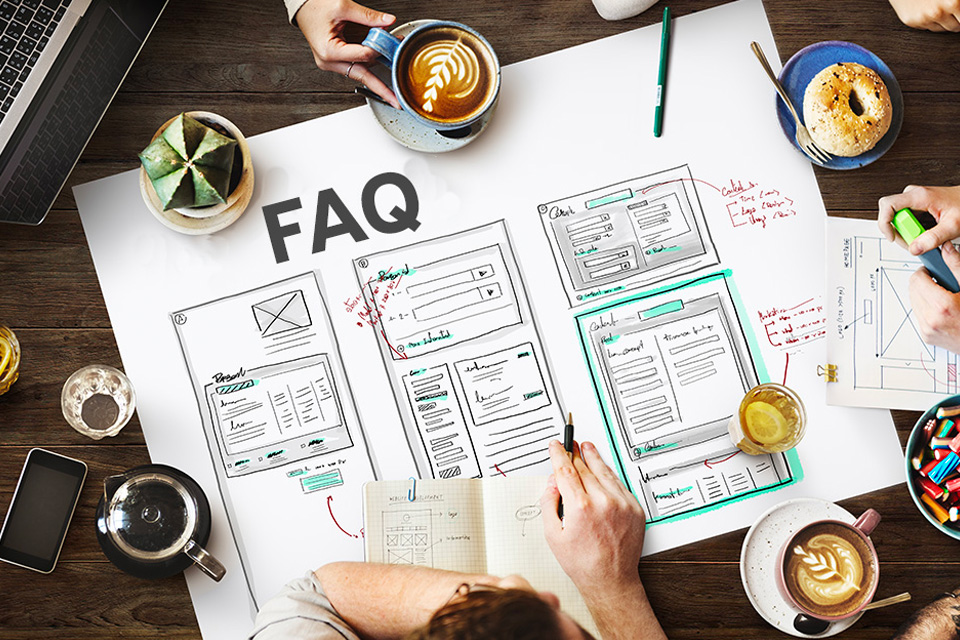Your website is a sales tool to help you move closer to the sale. If you design an effective FAQ page, it can help you with that process.
Websites as a whole are designed to give people what they want, without having to reach out and wait for answers or solutions. When people have questions, they want answers fast. In fact:
- 86 percent of B2B executives prefer using self-service tools for reordering, rather than talking to a sales representative
- 75 percent of customers believe it takes too long to reach a live agent
- 51 percent of customers think a business should be available and reachable 24/7
People today don’t believe they are just buying a product or service. Instead, they think they are making a decision based on an experience.
The more you improve that experience, the happier your customers will be.
That’s why designing a useful FAQ page is more crucial than ever. It can be the tipping point for your sales process, one that gives every customer who is interested in your business a way to deepen the relationship with you.
Why should you think about designing a FAQ page now?
- It’s an easy way to provide helpful information and address your prospects’ hesitations and questions. If you anticipate their needs, you can be there to answer all of their questions, even when you can’t be there live and in-person.
- It can be a boost for your SEO. Think about how search has changed over the last few years. While we once typed in a few search terms into the Google bar on your desktop or laptop, now we’re asking questions using voice commands to our smartphones or virtual personal assistants sitting on our desktops. “Best Thai restaurant” has now morphed to “What’s the best Thai restaurant here in Portland.”
But like all the pages on your site, there are proper methods for creating a FAQ page to reap the rewards online. FAQ pages must have a purpose to help convert traffic, or you’re simply putting up fluff info to fill up your site.
Where do you start?
Start by asking the right questions
A lot of FAQ pages look like they were thrown together at the last second. Their design is great – they may use lots of “bells and whistles” to include drop-down boxes, graphs and charts to add visual relevance, even graphics to complement the message. But the questions themselves … they’re awful.
They aren’t things your prospects and customers really care about. Their fluff, and aren’t something your audience wants to know.
To create a well thought out FAQ page, you need to dig deep and truly understand what your customers want to know. This is something you should get your entire sales team involved with. Think about what it takes to bring any new customer on board. Look at:
- All of your old customers service emails and find questions they routinely ask.
- Pay attention to free consultation calls – what do they want to know?
- Talk with each member of your sales team. What questions do they answer most?
- Why do prospects and customers routinely call in and ask for help?
- Poll your social media accounts and ask what isn’t clear about your products or services.
- Research your competition and discover what they are teaching their audiences.
Remember, your FAQ page is a work in progress. It’s never meant to be built once and leave it unchanged. As you discover new questions, add them and allow your page to grow with you over time.
Dig Deeper
On-Page SEO Factors Your Site Should Have
Is There A Difference Between Remarketing And Retargeting?
Make the layout user-friendly
Most FAQ pages start out as a question and answer list. This is the most common, and the one we’re most likely to be familiar with, so it’s the one most of us design.
However, the more questions you answer, the longer your list. And that means your customer base will have to scroll to find a solution to their problem.
As they start viewing items that don’t apply to them, they’re more likely to back out and move away from the page. FAQ pages are designed to be time-savers, and scrolling endlessly defeats the purpose.
FAQ pages are about creating a better user experience. So anything you can do to improve on that process will help your cause.
Start general and deep dive into different topics. Never give your viewer more than a handful of choices. Make it easy for them to say “yes, this is what I need.” Then take them by the hand and lead them along to find the answers they are looking for.
Be clear and concise with your answers
FAQ answers aren’t meant to be the end-all solutions. They are designed to answer one thought, and leave a person nodding their head and say, “okay.”
You can always lead them to other areas by adding related FAQ questions directly underneath. Again, your goal is to answer questions in a general manner, using concise copy.
Leave out marketing language, sales jargon, or difficult solutions. Consider writing it from the perspective of your customers: I and my. It can leave your reader feeling like they are being heard.
Always offer additional support
While a FAQ page should always be written in such a way a person can dig for an answer, realize that people stop digging at different points of the process. Sometimes the answers you provide aren’t enough.
How will you offer additional support? Make that obvious at every step of the process.
How about a box along the sidebar with one question: Need help? Then a button that connects them with a chatbox linked directly to your customer service.
If your business is smaller and you rely on email, link it directly to a form for them to fill out and send to customer service. Make the form user-friendly, too, with drop-down boxes and plenty of places for them to list their concerns.
People want to be heard. The more room you give them, the more likely they will be to connect with you.
Optimize the FAQ page for SEO
Yes, you’re creating your FAQ page for your customers. But that doesn’t mean you shouldn’t reap the rewards in Google too.
Especially now when voice search is growing in popularity, think like your customers. Be complete with the way you create your FAQ copy.
As you build your FAQ question list, type them into Google. You can use Google itself to create your FAQ questions. It can even prompt you for other questions searchers may have.
While you should never design exclusively for SEO, it can give you insight into what people are searching for. And that can help make your FAQ page even stronger.
Your FAQ page is a work in progress
Like all of your marketing, an FAQ page is an ever-growing, ever-changing marketing tool. You should review it regularly, and add to it over time to make your customer service process even better.
Have you met your online marketing goals this year? While designing an FAQ page is a great way to build on the customer experience, it only works if you have ample traffic.
That’s where we can help. How effective is your online marketing strategy?




